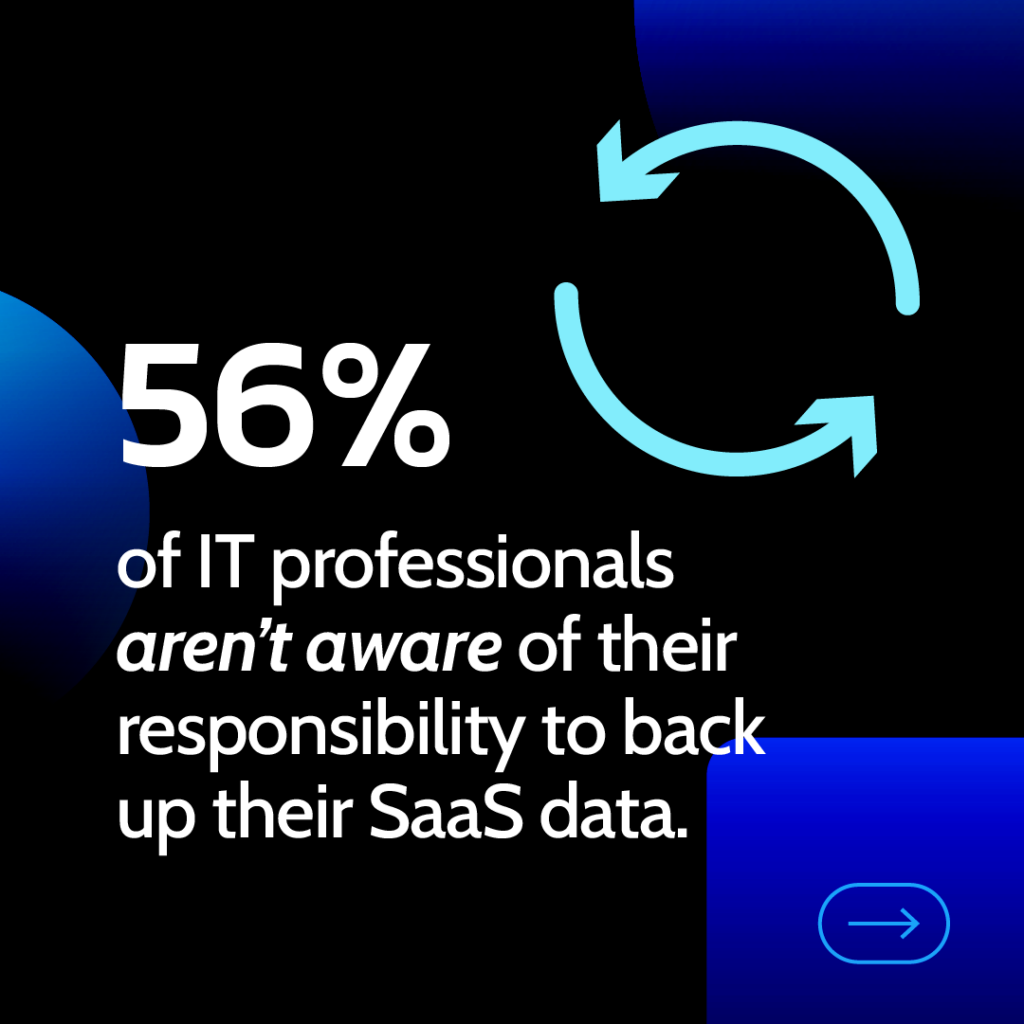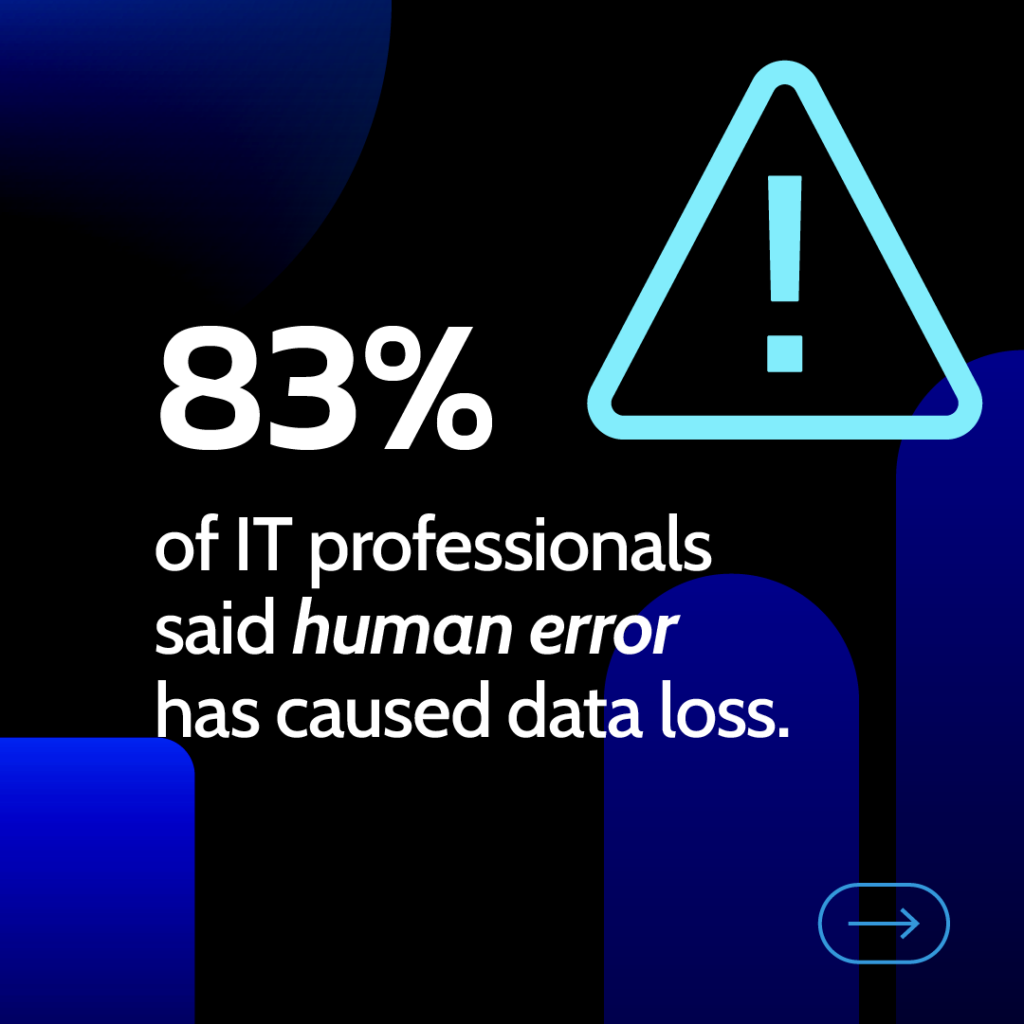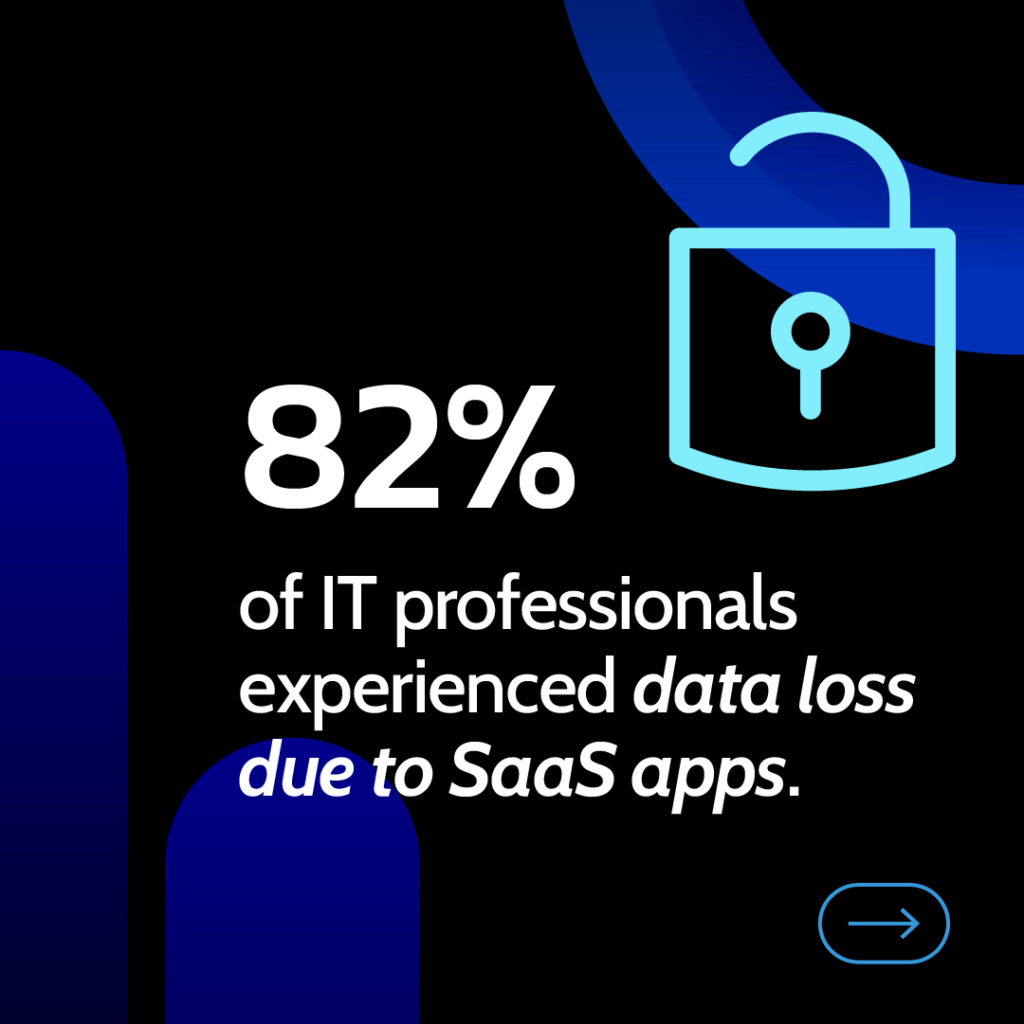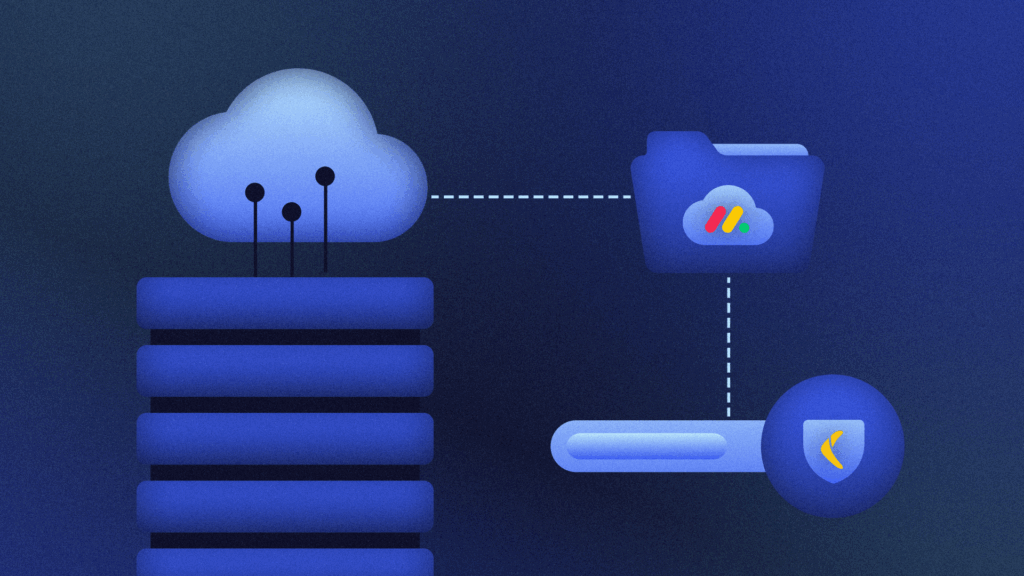By 2027, IT departments will spend more than $1 trillion on SaaS applications and cloud services, a 288% increase from 2020. As organizations increasingly rely on SaaS, IT leaders must know their data backup responsibilities.
However, a survey of 400+ IT decision-makers highlighted the critical gaps in SaaS data protection that could leave your organization vulnerable.
The report is a wealth of information that will open your eyes to the reality of the data protection landscape, but for now, here are some key takeaways:



Data loss is inevitable in the face of human error
The threat posed by Shadow IT is even more insidious within the context of human error events, which no amount of preparation can prevent. 84% of survey respondents said human error has caused data loss at their organization, with 49% saying it happened more than once.
This is devastating when you consider how reliant businesses are on their SaaS applications, with almost 60% of respondents saying they’re either very or extremely reliant. It’s clear that organizations are vulnerable to data loss—and mitigating that loss is a large undertaking.
More than half of IT professionals aren’t aware of their data backup responsibilities
SaaS solutions remove the burden of maintaining software infrastructure—but that doesn’t mean SaaS companies are responsible for data loss. These organizations are clear about this in their terms of service: their clients are responsible for the management and security of their own data—including user access, permissions, and backup—not them.
Yet 56% of survey respondents don’t understand their responsibility. When we asked whose responsibility it is to back up cloud applications, only 44% of respondents stated correctly that it’s theirs. In fact, 79% of survey respondents believe that SaaS applications have backup and recovery by default, which isn’t true.
Shadow IT obscures shared responsibility even further
Every department has unique software needs. The problem is that they’re not relying on IT to procure and manage that software. Instead, Finance, Marketing, Product Development, and other teams are allocating budgets to acquire their own SaaS applications and managing them internally.
The result is Shadow IT, a decentralized IT infrastructure created when software is deployed by departments other than IT. This means that non-technical staff are often expected to manage user access, sharing permissions, and data security.
So, 76% of survey respondents reported reading their terms of service multiple times. This likely only applies to the apps they procure and manage themselves. In reality, shadow IT is obscuring shared responsibility even further by leaving it in the hands of people who don’t know how to manage data security effectively. This leaves their data and tools open to considerable risk that, in most cases, goes unnoticed until critical data is lost.
Don’t miss out on more insights from the report!
There’s a lot more where these insights came from. Find out where you stand in the industry—and how to begin safeguarding your business-critical data. Download the report today!

 Miriam Saslove">
Miriam Saslove">


